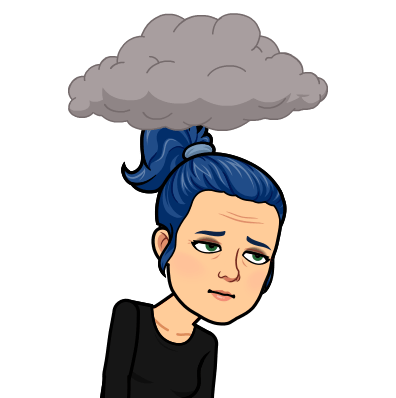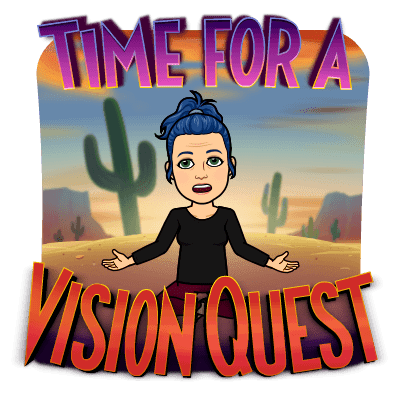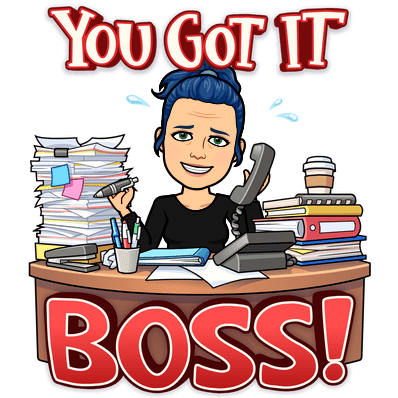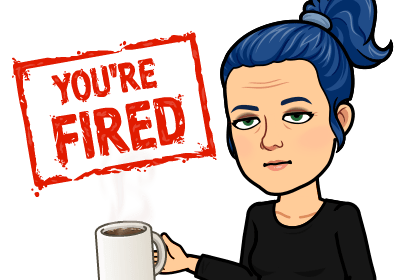ETL504 Module 3.1-Change in Organisations (2019): Improving the impact of change conflict with a shared vision and strategies for improving the work culture or climate

Change can be put into effect by various ‘change agents’ (managers, team members or consultants) and can be planned or unplanned and is either required based on internal or or external demands. Change from external demands is from sources such as: the marketplace / SES of the LGA; governing bodies / laws / regulations such as those required by ACARA or NESA; technological advances; the labour market such as the availability or oversupply of teachers; and economics / funding / the economy / budgets (Module 3.1, 2019).
Change required based on internal demands is from things such as: the school structure / eg. the school’s strategic plan, the library’s strategic plan, the school vision, the library vision, the school mission statement or the library mission statement; the workforce–from the principal to the GA; equipment, eg. buildings / pencils and; attitudes–the various backgrounds, experiences, religions, ethnicities and cultural groups of the stakeholders of the school (Module 3.1, 2019).
Some blockers to change might be caused by uncertainty, personal loss for ‘the way we’ve always done it,’ or genuine concern that change isn’t in the schools best interest (Module 3.1, 2019).
Change Management Strategies: “Planned, incremental change is always best” because work, workflow, attitudes & behaviours are all impacted by change (Module 3.1, 2019).
Change is initially confusing and challenging, but leaders can reduce change conflict or change-induced fatigue or stress by: linking the benefits of the change to the school vision or long term goals, anticipating where conflicts might arise and having a plan ready for how to ease them, education, communication, participation at all levels of the organisation and leadership facilitation, support & negotiation (rather than manipulation or coercion) (Module 3, 2019).

In schools it is key that we create a ‘learning organisation’ within 7 dimensions classified by Kools and Stoll (2016): “1) developing and sharing a vision centred on the learning of all students; 2) creating and supporting continuous learning opportunities for all staff; 3) promoting team learning and collaboration among staff; 4) establishing a culture of inquiry, innovation and exploration; 5) establishing embedded systems for collecting and exchanging knowledge and learning; 6) learning with and from the external environment and larger learning system; and 7) modelling and growing learning leadership” (Kools & Stoll, 2016, p.3). This can also be understood by points listed in this infographic by elearning infographics.com (2013):

Teams should also meet regularly for ‘wellness checks,’ including all stakeholders (leaders, staff, students and families) and change agents must remember that people learn best through: interdependence, change and the social constructs of reflective practise, conversing, inquiring and acting (Fleet, et al., 2016).
Fleet, et al., (2016) point out that positive change initiatives require: effective leadership, a positive school culture or climate, effective employment procedures, support, participation at all levels of the school (promoting a sense of respect for leaders who are able to perform the tasks that they expect others to be able to perform, individual ownership, consensual involvement & team-wide willingness to participate in changes or innovation) and creating a shared vision and mission statement.

‘Transformational’ or ‘distributional’ leaders need to develop a shared school vision in order to develop trusting relationships, solve complex problems, have a clear focus on teaching and learning, and a willingness to engage with the community (Fleet, et al., 2016; & Holmes et al., 2013). When creating a shared vision, Holmes, et al. (2013) reminds us that it takes a lot of time (sometimes frustratingly), as well as effective communication skills and patience in order to ensure inclusivity. Furthermore, sharing and communicating the school’s journey of change initiatives with the community promotes a shared understanding (Fleet, et al., 2016).
If every change or proposal (organisational, financial, teaching & learning) links to the school vision and strategic management plan then the changes are ‘well justified’ can receive whole school and organisational support and funding and this, in turn, further contributes to a positive school learning culture or climate and creates a ‘bottom up’ (rather than ‘top down’) influence (Fleet, et al., 2016; & Holmes, et al., 2013).

‘Top down’ influences often sidetrack school innovations, change or reforms and super-cede relationship building because trust takes more time than what is allowed by governing bodies (Holmes, et al., 2013). ‘Top down’ mandated changes have very little uptake by teachers, because they react with a range of negative emotions, believe they aren’t given neither time nor education to understand changes nor support prior to or at implementation, and that changes from the top are transitory and will soon be obsolete (Clement, 2014, p. 42).
A whole school approach to change is more likely to have teachers driving the change based on the school goals and agendas and within their own time parameters, leading to more understanding and less stress or conflict (Clement, 2014, p. 43). ‘Change fatigue’ or ‘innovation fatigue’ or ‘reform fatigue’ can result in teachers as we are in a constant cycle of mandated education reform (such as continual curriculum change) which presents as dissatisfaction, exhaustion and perceptions of increased workload, lack of support, training and resources and unrealistic mandated implementation timelines (Dilkes, et al., 2014).
“Cynical, realistic and even enthusiastic teachers suffer change fatigue after years of rapid and continual curriculum change” (Dilkes, et al., 2014 p.45).

“Principals must be managers as well as leaders, dealing with the pragmatics of managing a complex system, being the human face of relationships amongst school personnel, learners & the community, as well as offering constructive visionary leadership to carry the school through the mundane, through the complexities of diversity, politics & bureaucratic infrastructures to the desired future” (Fleet, et al., 2016, p. 73). Humour, patience, flexibility, accountability, commitment and thoughtfulness are the skills of “visionary” leaders, as well as the ability to understand that knowledge and genuine learning communities and pedagogies are socially constructed (Fleet, et al., 2016 p 74).
Teachers can often express that they feel stress, physically, mentally and behaviourally (Module 3, 2019) and some ideas to help alleviate stress are: develop a whole school approach to growth mindset, flow and/or mindfulness; encourage a work-life balance (eg. stick to a work timetable then stop working at that agreed time-including emails, and think about something other than work every day, etc); do a ‘what I can control versus what I can’t control’ mind-map in order to identify stress triggers; ‘don’t sweat the small stuff’ by prioritising or focusing on what really matters to you or what is a top goal; do a ‘stress’ survey and discuss the stresses identified openly as a team; find someone to talk to or to collaborate with; set S.M.A.R.T. goals; accept and give recognition to and from colleagues; seek and offer appropriate training and supports; and say ‘no’ and encourage others to say ‘no’ sometimes (Bailey, 2013; Cross, 2015).
 Reflection on change conflict, fatigue and stress:
Reflection on change conflict, fatigue and stress:
Is change conflict, fatigue and stress in my school representative of: individual and whole school stress management or coping mechanisms not being in place; a lack of a true growth mindset in teachers or leadership, a lack of a ‘invested interest’ from all stakeholders because of ‘top down’ mandated change, a lack of understanding of the benefits of the particular change and how it relates to the school vision and student outcomes, poor communication about the change(s), a lack of understanding about how to implement a change, insufficient time given to implement the change, a history of consistent change creating a ‘why bother’ mentality, backlash from the community who’ve been left out of the decision making process or who haven’t had adequate communication about the change, or a reaction to the change itself due to consistent change creating ‘change fatigue?’
Reflection on downsizing:

- I have worked for a clothing company who when into administration and closed down.
- I was also retrenched once from a marketing position.
- Later, as a temporary teacher, I did not have my contract renewed at one school and
- I did not have my contract renewed at another school the following year.
In the first and second and third instances, I felt that my employer looked after me to some degree, two found me work elsewhere (to some degree), one gave me access to external counselling and an external c.v. creation training service at no cost, but one (the last and most recent) did hardly anything to ensure my mental and financial health was in any way looked after as recommended by Wolfe (2019). I put this down to inexperience and arrogance of the leader(s) who thought downsizing by not renewing my contract was in the best interest of their school…although, it would have been better to have asked the staff for alternatives to laying off a teacher (Wolfe, 2019).
Similarly, as suggested by Wolfe (2019), my extreme level of poor mental health was not assisted by the lack of communication as to why I was selected to be ‘downsized’ but the other 8 temporary teachers were not, many of whom were not communicated with regarding my situation, creating a terribly insecure work culture (without any communication from the top, most asked me what happened, resulting in further distress).
References
Bailey, A. (2013, November 6). 10 ideas to help teachers beat stress. The Guardian. Retrieved from https://www.theguardian.com/teacher-network/teacher-blog/2013/nov/06/teachers-beat-stress-10-ideas
Change in Organisations: 3.1 [Study notes]. (2019). In ETL504: Teacher librarian as leader. Retrieved from Charles Sturt University Faculty of Education and the Art’s Interact 2 website: https://interact2.csu.edu.au/webapps/blackboard/content/listContent.jsp?course_id=_42385_1&content_id=_2928579_1
Clement, J. (2014). Managing mandated educational change. School Leadership & Management, 34(1), 39-51. doi:10.1080/13632434.2013.813460
Cross, D. (2015). Teacher well being and its impact on student learning [Slide presentation]. Telethon Kids Institute, University of Western Australia. Retrieved from http://www.research.uwa.edu.au/__data/assets/pdf_file/0010/2633590/teacher-wellbeing-and-student.pdf
Dilkes, J., Cunningham, C., & Gray, J. (2014). The new Australian Curriculum, teachers and change fatigue. Australian Journal of Teacher Education, 39(11). doi: 10.14221/ajte.2014v39n11.4
elearning infographics.com. (2013). How is a learning organisation differentiated. Retrieved from https://elearninginfographics.com/how-is-a-learning-organisation-differentiated-infographic/
Fleet, A., De Gioia, K. & Patterson C. (2016). Engaging with educational change. Retrieved from ProQuest Ebook Central.
Kools, M. & Stoll, L. (2016). What Makes a School a Learning Organisation?, OECD Education Working Papers, No. 137, OECD Publishing, Paris, Retrieved from https://doi.org/10.1787/5jlwm62b3bvh-en.
(2013). The complex task of leading educational change in schools, School Leadership & Management, 33:3, 270283, DOI: 10.1080/13632434.2013.800477
Wolfe, L. (2019, April 7). Here are some alternatives to laying off employees when downsizing. In The balance careeres, Retrieved from https://www.thebalance.com/alternatives-to-laying-off-employees-when-downsizing-3515483








